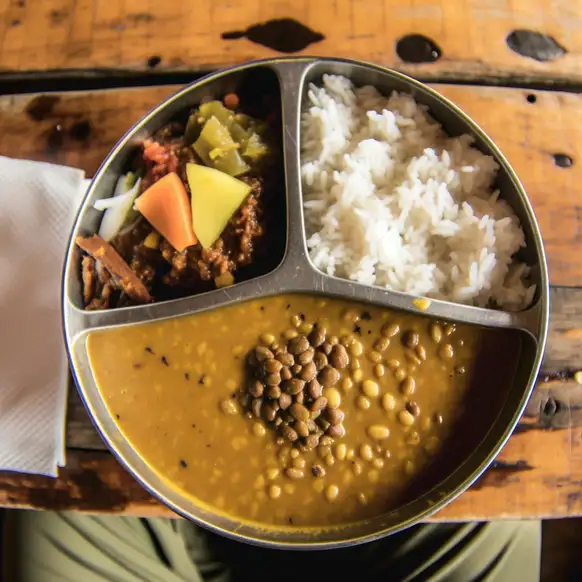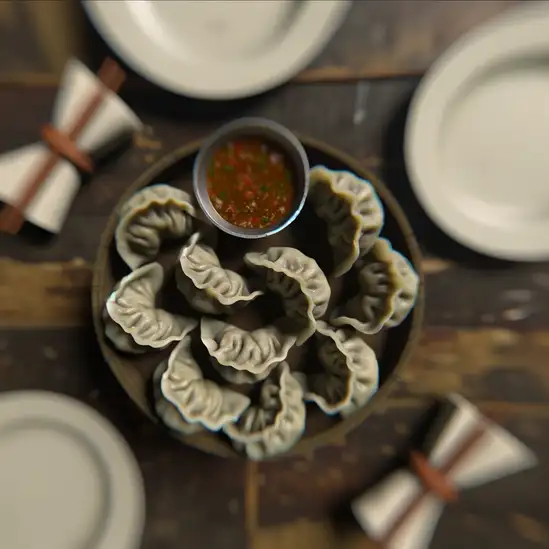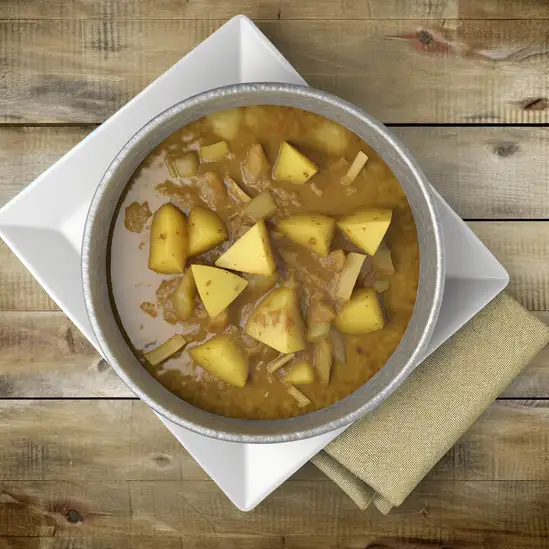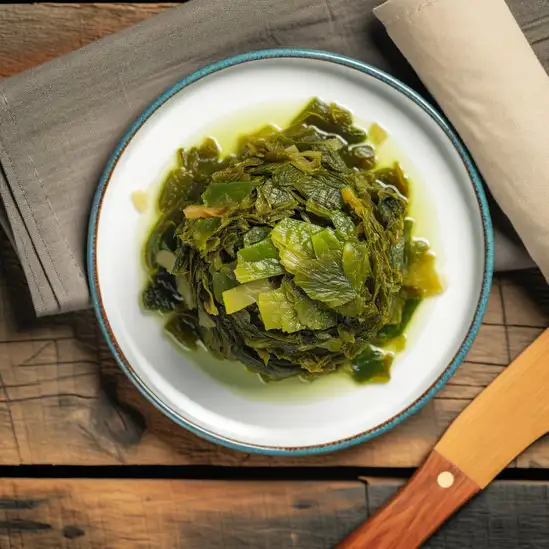



If you ever find yourself trekking through the Himalayas,Namche Bazar is the kind of place that instantly wraps you in its warm,bustling embrace. Perched high above the Dudh Koshi River,this vibrant market town feels like the heartbeat of Sherpa culture. The moment you step into its lively streets,you’re greeted by the chatter of traders,the clinking of prayer wheels,and the rich aroma of yak butter tea mingling with the crisp mountain air. It’s a place where tradition and adventure collide beautifully. Walking through Namche’s narrow alleys,you’ll spot colorful prayer flags fluttering against the backdrop of snow-capped peaks,and friendly faces framed by weathered smiles. The local shops brim with handwoven woolens,intricate handicrafts,and fresh mountain produce. Don’t miss the chance to savor momos—those pillowy,steamed dumplings bursting with flavor—at a cozy teahouse while watching trekkers and locals swap stories over steaming cups of chai. What makes Namche truly special is its rhythm:a blend of serene spirituality and lively community life. It’s a place where you can feel the pulse of the mountains in every step,yet find moments of quiet reflection in the small monasteries tucked away on the hillsides. Whether you’re acclimatizing for Everest or simply soaking in the culture,Namche Bazar invites you to slow down,breathe deeply,and connect with a world that feels both ancient and alive.
The information on this page is currently being reviewed by Tripkliq and should be used as a guide only
Eng word: Hello
Eng pronunciation: Tashi Delek
Local language: བཀྲ་ཤིས་བདེ་ལེགས།
Eng word: Goodbye
Eng pronunciation: Zim Jag Nang Go
Local language: གཟིམ་འཇགས་གནང་གོ
Eng word: Thank you
Eng pronunciation: Thuk Je Che
Local language: ཐུགས་རྗེ་ཆེ།
Eng word: How much
Eng pronunciation: Ga Tsa Red
Local language: ག་ཚད་རེད།
Eng word: Toilet
Eng pronunciation: Sang Chö
Local language: གསང་སྤྱོད།
Eng word: Help me
Eng pronunciation: Ngal So Nang Rog
Local language: ངལ་གསོ་གནང་རོགས།
Eng word: Yes
Eng pronunciation: E
Local language: ཨེ།
Eng word: No
Eng pronunciation: Mi
Local language: མི།
Eng word: Excuse me
Eng pronunciation: Gong Dak
Local language: དགོངས་དག
Namche Bazar serves as the gateway to Mount Everest, the world's highest peak. It is the starting point for trekkers and climbers heading towards Everest Base Camp.
Historically, Namche Bazar was an important trading hub where Tibetan and Nepali traders exchanged salt, textiles, and dried meat. The Saturday market remains a significant aspect of Namche’s culture.
Namche Bazar is often referred to as the Sherpa capital of Nepal. It is home to many Sherpa people, who are renowned for their mountaineering prowess.
A statue in memory of Tenzing Norgay, one of the first two individuals to reach the summit of Mount Everest, is located in Namche Bazar. It stands as a tribute to his achievements and contributions.
Namche Bazar is located within the Sagarmatha National Park, a UNESCO World Heritage Site that is home to diverse flora and fauna, including rare species like the snow leopard and the red panda.
Despite its remote location, Namche Bazar boasts modern amenities such as internet cafes, bakeries, and lodges, thanks to its popularity with tourists and trekkers.
Near Namche Bazar is the Syangboche Airport, one of the highest airports in the world, offering stunning views of Himalayan peaks, although it primarily serves helicopters and small fixed-wing aircraft.
Namche Bazar offers a unique opportunity to experience Himalayan culture and traditions, with many festivals and monasteries showcasing the rich heritage of the region.
The Namche Monastery is a significant cultural site, offering insights into Buddhist practices and Himalayan spirituality. It is a place of peace and meditation for both locals and visitors.
In Namche Bazar, the most common Power Adaptor is Type C, Type D.



A hearty noodle soup that originated from Tibet, typically made with meat or vegetables, and flavored with spices. It's a warming dish, perfect for the cold climate.

A traditional homemade, sweet, and crispy rice-based doughnut, often enjoyed during festivals and special occasions.

A traditional Nepali meal consisting of lentil soup (dal) served with rice (bhat) and accompanied by various side dishes like vegetables and pickles.

Nepalese dumplings filled with meat or vegetables, often served with a spicy dipping sauce. They are a popular snack or meal option in Namche Bazar.

A unique curry made with potatoes (aloo) and bamboo shoots (tama), often cooked with black-eyed peas and spices, offering a distinct flavor.

Fermented leafy green vegetables, often served as a side dish. Gundruk is a staple in Nepali cuisine and adds a unique tangy flavor to meals.
Imagine stepping into a place where ancient temples nestle beside bustling markets,and the air hums with the rhythm of daily life and centuries-old traditions. That’s Kathmandu for you—a city that feels alive in every corner,where the scent of incense mingles with the aroma of fresh spices from street food stalls. Walking through its narrow,winding streets,you’ll hear the melodic chants from monasteries blending with the chatter of locals bargaining over vibrant fabrics and handcrafted trinkets.
Kathmandu’s character is a beautiful tapestry of old and new. The intricate wood carvings on centuries-old buildings tell stories of a rich cultural heritage,while the lively cafes and art galleries hint at a youthful,creative pulse. There’s a warmth in the smiles of the people here,a genuine openness that invites you to slow down and soak in the moment. Whether you’re sipping sweet,milky chai in a cozy courtyard or watching the sunset paint the sky behind the towering Himalayas,the city wraps you in a comforting embrace.
What makes Kathmandu truly unforgettable is its ability to surprise you at every turn. One moment you’re marveling at the golden spires of Swayambhunath,the next you’re savoring momos bursting with flavor from a street vendor. It’s a place where spirituality and everyday life dance together,leaving you with a sense of wonder and a heart full of stories to tell.
If you ever find yourself in Male,Maldives,get ready to be swept up by a vibrant little city that pulses with island life and unexpected energy. It’s not your typical tropical getaway where everything feels distant and quiet—instead,Male buzzes with a lively rhythm,where the scent of salty ocean air mingles with the aroma of fresh spices from bustling street markets. Walking through its narrow streets,you’ll hear the chatter of locals,the hum of motorbikes,and the occasional call to prayer echoing from the mosques,all blending into a soundtrack that feels both ancient and alive.
What’s really captivating about Male is how it balances tradition and modernity. You’ll see colorful buildings painted in bright pastels,fishing boats bobbing in the harbor,and sleek cafes serving up rich Maldivian coffee alongside international flavors. The city’s compact size means you can explore on foot,discovering little corners where vendors sell fragrant tropical fruits or where fishermen unload their fresh catch of the day. The warmth of the people here is palpable—they’re proud of their culture and eager to share stories if you stop to chat.
And don’t miss the chance to taste the local cuisine—imagine biting into a spicy mas huni breakfast,where shredded tuna,coconut,and chili dance on your tongue,or savoring grilled seafood fresh from the Indian Ocean. Male isn’t just a gateway to the Maldives’ famous resorts; it’s a lively,sensory-rich place that invites you to slow down,soak in the island spirit,and feel connected to a culture that’s as deep as the surrounding blue waters.
Bangkok is one of those cities that grabs you the moment you step out into its bustling streets. There’s this electric energy in the air—a mix of honking tuk-tuks,sizzling street food stalls,and the chatter of locals weaving through markets. The city feels alive,like it’s constantly moving and breathing,yet somehow it balances this chaos with moments of serene beauty,like the golden spires of temples catching the afternoon sun or quiet canals reflecting the sky.
Walking through Bangkok,you’ll be hit by a whirlwind of scents:fragrant jasmine from flower vendors,the sharp tang of lemongrass and chili from street carts,and the sweet aroma of mango sticky rice tempting you at every corner. The colors are just as vivid—neon signs flicker alongside traditional wooden shophouses,and monks in saffron robes glide past modern skyscrapers. It’s a city where old and new dance together effortlessly.
What really makes Bangkok special is its warmth and openness. The people here have a genuine kindness that shines through,whether you’re bargaining at Chatuchak Market or sharing a laugh over a bowl of spicy boat noodles. The culture is rich and layered,from the intricate rituals at Wat Pho to the lively festivals that light up the streets. Visiting Bangkok feels like stepping into a story that’s still unfolding,full of surprises and moments that stay with you long after you leave.
If you step into Colombo District,you immediately feel the pulse of a city that’s both vibrant and laid-back,where old-world charm meets modern hustle. Imagine walking along bustling streets lined with colonial-era buildings,their faded facades telling stories of a rich past,while sleek glass towers rise nearby,reflecting the tropical sun. The air carries a mix of scents—spices from street food stalls,salty sea breeze from the nearby coast,and the faint aroma of jasmine from roadside vendors. It’s a place where the sounds of honking tuk-tuks blend with the call to prayer and the laughter of children playing in small parks.
Colombo’s character is a beautiful mosaic of cultures. You’ll find Buddhist temples nestled beside mosques and churches,and markets where Tamil,Sinhalese,and Muslim communities come together in a colorful dance of languages and traditions. The city’s food scene is a feast for the senses—imagine biting into a crispy hopper drizzled with coconut sambol or sipping on a strong,sweet Ceylon tea while watching the sunset over Galle Face Green,where locals fly kites and families gather to unwind.
What makes Colombo truly special is its warmth. Despite the city’s fast pace,there’s a genuine friendliness in the smiles of shopkeepers and the inviting chatter in cafés. It’s a place where you can lose yourself in vibrant street art one moment and find quiet reflection in a serene temple garden the next. Colombo isn’t just a destination; it’s an experience that stays with you long after you leave.
Imagine stepping into a city where sleek skyscrapers meet lush greenery,and every corner hums with a vibrant energy that’s both modern and deeply rooted in tradition. That’s Singapore for you—a place where the air carries the fragrant mix of blooming orchids and sizzling street food,and the streets buzz with a blend of languages and laughter. Walking through neighborhoods like Chinatown or Little India,you’ll catch the rich aromas of spices mingling with the sweet scent of tropical fruits,inviting you to explore further.
What’s truly captivating about Singapore is how effortlessly it balances the fast-paced pulse of a global hub with pockets of serene beauty. You can be wandering through the futuristic Gardens by the Bay one moment,marveling at the towering Supertrees glowing softly at dusk,and the next,find yourself savoring a bowl of laksa or chili crab at a bustling hawker center,surrounded by locals chatting animatedly. The city’s character shines through its people—warm,diverse,and proud of their heritage,yet always welcoming.
There’s a rhythm here that’s both energizing and comforting. Whether you’re cycling along the waterfront,catching a sunset over Marina Bay Sands,or simply sipping kopi in a cozy café,Singapore invites you to slow down and soak in its unique blend of cultures,flavors,and sights. It’s a city that surprises you with its layers,making every visit feel like a new discovery.
If you find yourself wandering through Kota Denpasar,you’ll immediately notice its lively heartbeat—a city that hums with everyday life yet carries a deep cultural rhythm beneath the surface. It’s not the polished tourist hub like southern Bali,but that’s exactly what makes it so captivating. The streets buzz with scooters weaving through markets where the scent of fresh spices mingles with the earthy aroma of tropical fruits. Vendors call out in warm,melodic tones,inviting you to taste something new or simply share a smile.
Denpasar feels like the authentic soul of Bali,where tradition and modern life dance side by side. You’ll see women in vibrant kebayas carrying offerings to temples,while nearby,young artists sketch murals that splash color onto old walls. The city’s pulse is both chaotic and comforting,with the clatter of street food stalls serving up fragrant nasi campur and the gentle chime of temple bells weaving through the air.
What’s truly special is how Denpasar invites you to slow down and soak in its layers—whether it’s the warmth of a local’s greeting,the taste of freshly brewed Balinese coffee,or the sight of intricate carvings on ancient temples tucked between bustling streets. It’s a place where you don’t just visit; you become part of the daily story,feeling the city’s spirit in every step you take.
Some shops sell fake or low-quality trekking gear branded as premium products, which may fail during treks.
Unlicensed money exchangers offer poor exchange rates or use sleight of hand to shortchange tourists.
Scammers claim to represent local charities or schools and ask tourists for donations, which are pocketed instead of going to the cause.
Scammers sell fake trekking permits or conservation area passes, which can lead to fines or issues with authorities during treks.
Unlicensed or inexperienced individuals pose as trekking guides, charging tourists high fees but providing poor service or abandoning them mid-trek.
Some lodges quote higher prices to tourists than locals, or add hidden fees for basic services like hot water or Wi-Fi.
Local shops and vendors inflate prices for food, gear, and souvenirs, especially for tourists unfamiliar with the standard rates.
The use, possession, and trafficking of drugs are illegal in Nepal, including Namche Bazar. Nepal has strict laws against drug-related activities, and penalties can be severe, including imprisonment and heavy fines. Tourists should avoid any involvement with illegal drugs to prevent legal issues and ensure a safe and enjoyable visit.
In Namche Bazar, as in the rest of Nepal, smoking is generally allowed in public places, but it is advisable to be considerate of others, especially in crowded or enclosed areas. Some hotels, restaurants, and public spaces may have designated smoking areas or may prohibit smoking entirely. Always look for signs and follow local customs to avoid any issues.
Vaping is relatively new in Nepal and is not as widely regulated as smoking. However, it is best to follow the same guidelines as smoking. Use vaping devices discreetly and avoid using them in crowded or enclosed public spaces unless you are certain it is allowed. Always be respectful of local customs and regulations.
What are other people saying about Namche Bazar?
Recent Social posts about Namche Bazar
There is nothing to show you for now.